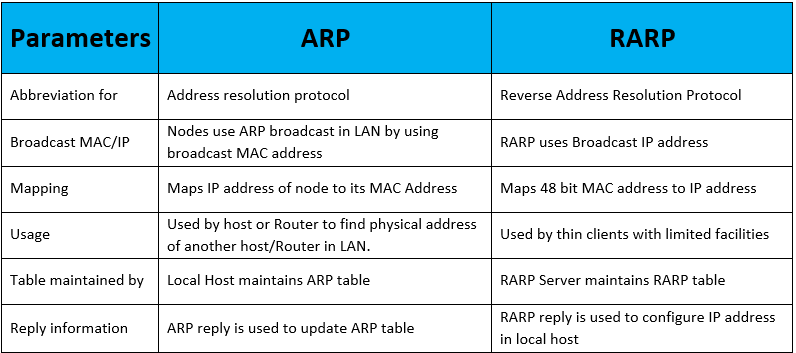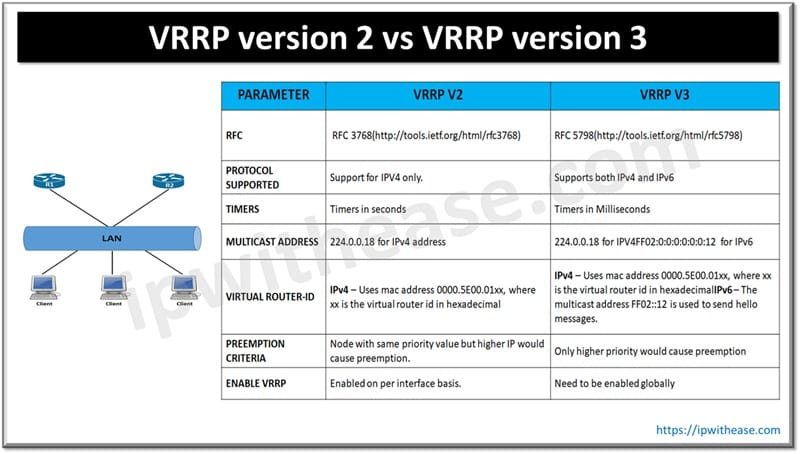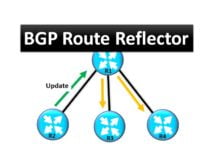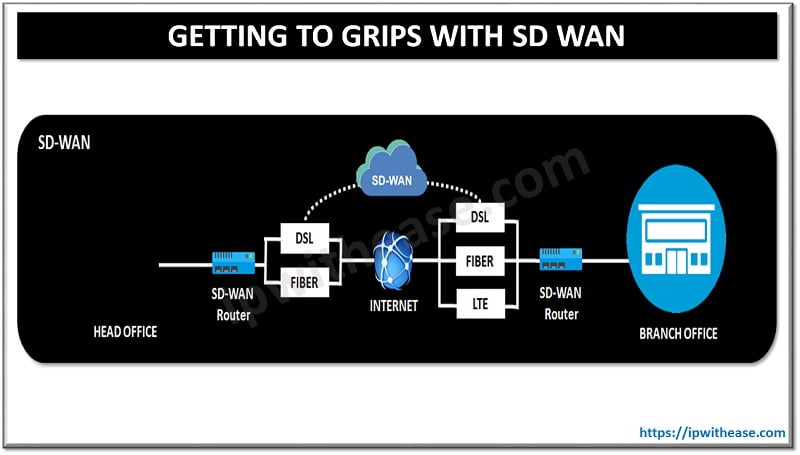Google ADs
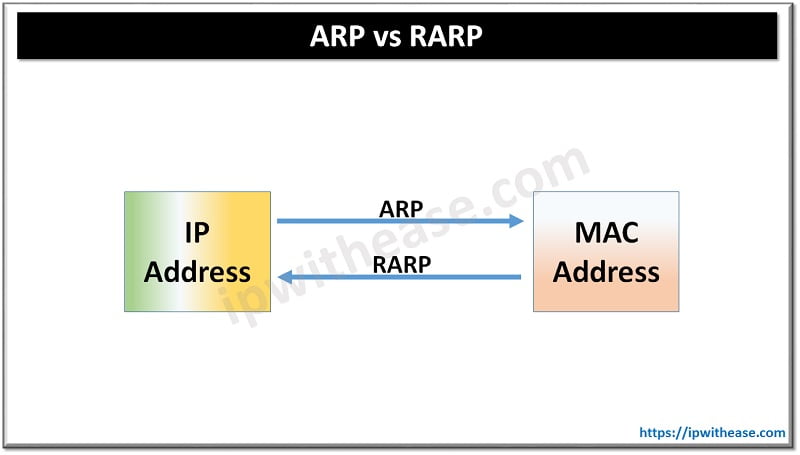 Before discussing ARP vs RARP, let us understand the two terms first.
Before discussing ARP vs RARP, let us understand the two terms first.
ARP stands for Address resolution protocol and RARP is an abbreviation for Reverse Address Resolution Protocol. Both are LAN protocols and are quite similar in some ways.
Both use Broadcast in Request and unicast in response. Both ARP and RARP have the objective to complete the IP address to MAC address mapping.
Google ADs
Additionally, both utilize the same packet format including usage of broadcast addresses.
Difference between ARP and RARP:
| PARAMETER | ARP | RARP |
|---|---|---|
| Abbreviation for | Address resolution protocol | Reverse Address Resolution Protocol |
| Broadcast MAC/IP | Nodes use ARP broadcast in LAN by using broadcast MAC address | RARP uses Broadcast IP address |
| Mapping | Maps IP address of node to its MAC Address | Maps 48 bit MAC address to IP address |
| Usage | Used by host or Router to find physical address of another host/Router in LAN. | Used by thin clients with limited facilities |
| Table maintained by | Local Host maintains ARP table | RARP Server maintains RARP table |
| Reply information | ARP reply is used to update ARP table | RARP reply is used to configure IP address in local host |
![]()
Download the difference table here.
To know more about ARP vs RARP watch this video –
Related Blogs –
ABOUT THE AUTHOR

Founder of AAR TECHNOSOLUTIONS, Rashmi is an evangelist for IT and technology. With more than 12 years in the IT ecosystem, she has been supporting multi domain functions across IT & consultancy services, in addition to Technical content making.
You can learn more about her on her linkedin profile – Rashmi Bhardwaj

